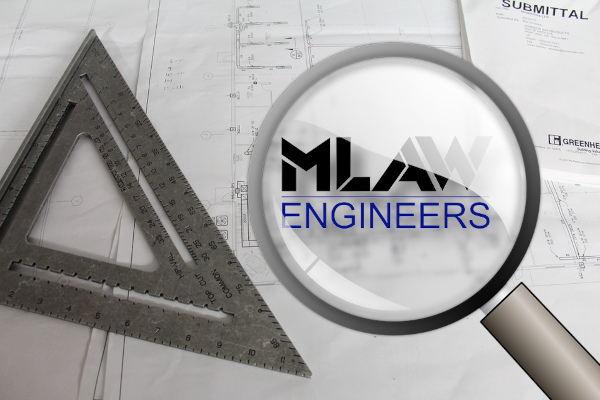Featured Article
Steel structural framing has been used for many years in commercial construction. It is only used rarely for residential construction. The main reason appears to be that “it has always been done that way”. Another reason is probably that homebuilders do not have access to subcontractors who are familiar with utilizing steel as a construction material.
There are a number of advantages of using steel framing in a structure including the following:
- Steel can be specified precisely for the needs and can reduce deflections. For example, on long span floors and roofs.
- Steel joists and studs may be less expensive to purchase than an adequate amount of comparable strength in wood species.
- Variation in costs may be more controllable in steel than it would be in wood.
- Quality control for steel is more precise since you do not have to work around knots or splits or warped members.
- Similar spans can be achieved with steel with less head room taken out of the floor systems because of the greater strength of steel compared to wood. Steel is at least 10 times as strong as wood in bending capacity and as much as 20 times as stiff.
- Steel will not shrink or swell with moisture change as wood will. On the other hand, steel will react to thermal changes but these should not be significant on the interior of a conditioned home. Wood will also react to thermal changes.
Some disadvantages of using steel framing in residential construction could include the following:
- While materials may be less expensive than wood, labor may be higher. Labor may be 10% – 20% higher because it takes longer to cut and fasten steel than to nail and fit wood. Initially, labor may be 25% higher because of unfamiliarity with this material.
- Steel lacks the sound or temperature insulating qualities of wood and it may be necessary to utilize wood stud construction on exterior walls or be certain that proper insulation is installed between steel members and the exterior of the building.
- Specialized installation and assembly techniques will be required, which would include extra protection for eyes, equipment for cutting steel such as carborundum saws and special self tapping screws.
- Although steel can be ordered in any reasonable length additional pre-planning may be necessary to properly utilize this material in construction.
- Sheared steel edges can slice a person’s hands without proper protection. Rolled edges should probably be used to eliminate much of this problem.
In summary, steel provides the opportunity for homebuilders to provide less head room loss, longer spans and stiffer floors for material savings of up to 30% over wood framing materials. Proper training and education of workers and subcontractors would be necessary to bring the labor differential down to an acceptable level. Careful consideration will have to be given to the thermal efficiency of the building envelope when using steel.
Kirby T. Meyer, P.E.
MLAW Consultants & Engineers
Originally published in MLAW Newletter, August 2003

Explore
Framing Problems
Most single and multi-family residences and significant number of small to mid size commercial structures utilize wood framing for structural support. Terms: Timber Framing – refers to heavy timber 8″ x 8” or larger. Lumber – surface finished (S4S) wood members equal to or smaller than 6″ x 6″ or 2″ x 14″. GLU-LAM –…
Read MoreWhat Is the Deal about Fill?
Fill is a broad subject that is frequently a factor in residential foundation construction. Most often, fill is a legacy the builder inherits when he buys lots which have been filled by the developer. Fill can generally be divided into three types: Engineered fill Forming fill Uncontrolled fill Engineered fill is that which has been…
Read More
